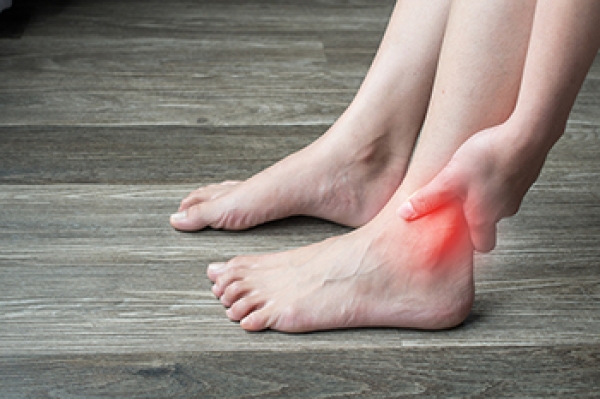
Ankle pain can be brought on by over-exercising or wearing shoes that do not fit properly. Such pain can also arise from a sprained ankle, Achilles tendonitis, or bursitis, among other things. Symptoms of a sprained ankle are usually pain, swelling, and bruising. Achilles tendonitis results from over-stretching of the Achilles tendon. Pain will often be felt in the ankle, heel, and possibly the calf, especially when standing on the tiptoes. Bursitis is when the fluid-filled sacs around the joints become inflamed. One might experience redness and swelling in the ankle, in addition to a dull aching pain. If you suffer from ankle pain and it is not improving with rest and cessation of activity, it is suggested that you see a podiatrist to help determine its cause and obtain a treatment plan.
Ankle pain can be caused by a number of problems and may be potentially serious. If you have ankle pain, consult with Dr. Joshua David Scoll from Pennsylvania. Our doctor will assess your condition and provide you with quality foot and ankle treatment.
Ankle pain is any condition that causes pain in the ankle. Due to the fact that the ankle consists of tendons, muscles, bones, and ligaments, ankle pain can come from a number of different conditions.
Causes
The most common causes of ankle pain include:
- Types of arthritis (rheumatoid, osteoarthritis, and gout)
- Ankle sprains
- Broken ankles
- Achilles tendinitis
- Achilles tendon rupture
- Stress fractures
- Bursitis
- Tarsal tunnel syndrome
- Plantar fasciitis
Symptoms
Symptoms of ankle injury vary based upon the condition. Pain may include general pain and discomfort, swelling, aching, redness, bruising, burning or stabbing sensations, and/or loss of sensation.
Diagnosis
Due to the wide variety of potential causes of ankle pain, podiatrists will utilize a number of different methods to properly diagnose ankle pain. This can include asking for personal and family medical histories and of any recent injuries. Further diagnosis may include sensation tests, a physical examination, and potentially x-rays or other imaging tests.
Treatment
Just as the range of causes varies widely, so do treatments. Some more common treatments are rest, ice packs, keeping pressure off the foot, orthotics and braces, medication for inflammation and pain, and surgery.
If you have any questions, please feel free to contact one of our offices located in Philadelphia, Bensalem, and Fairless Hills, PA . We offer the newest diagnostic and treatment technologies for all your foot care needs.

